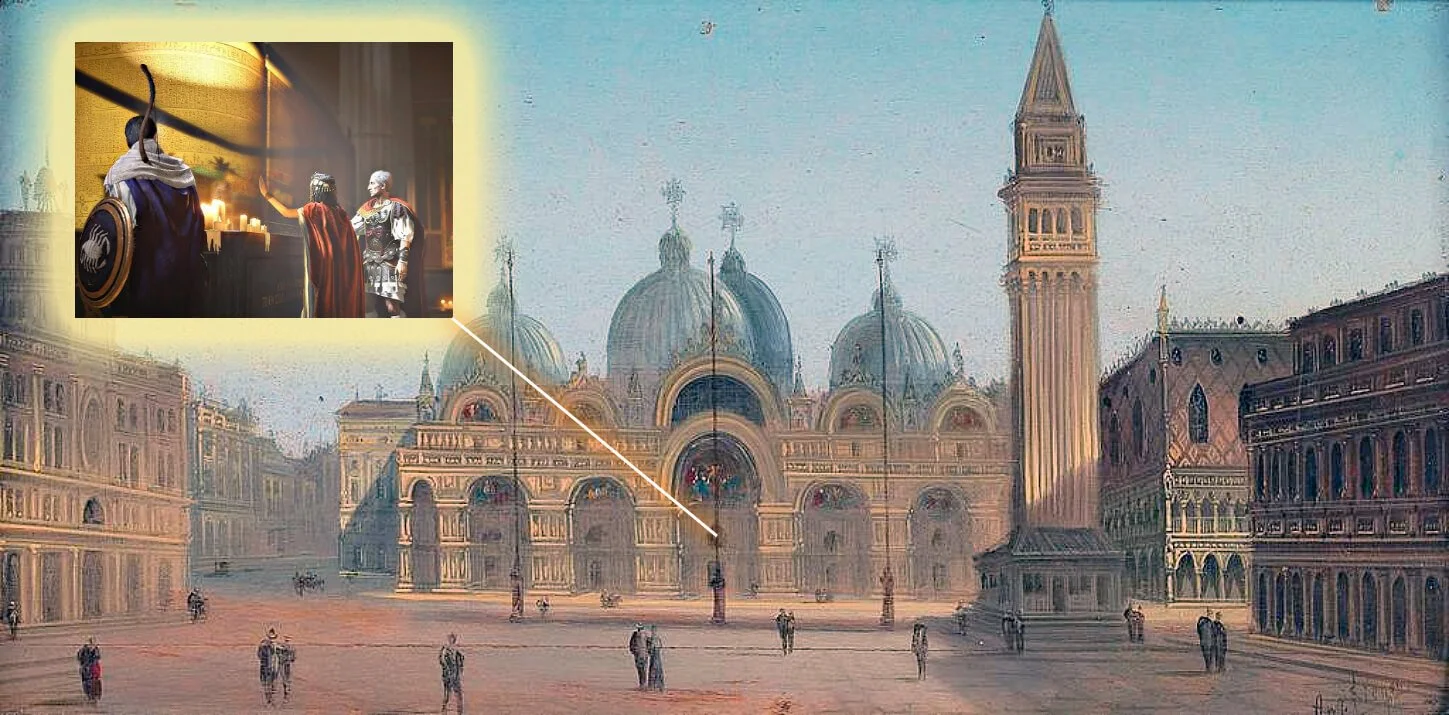In the quiet countryside of northwestern Germany, an extraordinary archaeological discovery has captured the imagination of experts and the public alike. Deep beneath the surface of a modern residential development project in the Delbrück-Bentfeld area of Paderborn, researchers have uncovered the remains of a sophisticated Roman-era rural settlement dating back nearly 1,800 years.
Lea Rokus, a student involved in the excavation, recently presented a beautifully decorated pottery shard, estimated to be almost two millennia old—just one of the many remarkable finds shedding light on this once-forgotten corner of Roman influence in Germania.
A Settlement Revealed
The 20-centimeter knife with integrated bronze strips was found buried beneath the floor of the small building (Photo: LWL/A. Madziala).
The excavation, overseen by the Westphalia-Lippe Regional Authority (LWL), began in November 2024 and has since brought to light the remains of at least three rural settlements near the ancient Roman military camp of Anreppen. Among the most fascinating discoveries are a finely engraved gemstone bearing the image of Hermes—the Roman god of commerce and travel—and a mysterious knife buried in an unusual position beneath a dwelling’s floor.
Originally believed to house just a single isolated farmhouse, the area now reveals a far more complex and extensive pattern of habitation, challenging previous assumptions made during a preliminary study conducted eight years ago.
Traces of Everyday Life
Dr. Sven Spiong from LWL-Archäologie in Bielefeld highlights how the Lippe River basin is rich with traces of early post-Roman settlements. Through their excavations, archaeologists aim to analyze the spread and characteristics of these rural communities more precisely.
Among the key findings is the accurate dating of one farmhouse on the eastern edge of the site. Coins and pottery fragments suggest continuous occupation between the 2nd and 3rd centuries AD. Ground imprints also allow for partial reconstructions of buildings, including a large central residence and semi-subterranean annexes to the north and south, likely used for weaving or other domestic activities.
Water access, a critical need for any settlement, was secured via a shallow well dug down to the water table. Soil patterns indicate the well was originally reinforced with timber to aid in water collection.
Glimpses of Local Economy
In the southwestern section of the excavation zone, another farmhouse is under study. Here, archaeologists discovered evidence of a kiln, indicating that alongside textile production, the settlement may have supported metalworking—particularly copper smelting for decorative objects.
Fragments from the kiln walls, vitrified from intense heat and containing metal residues, leave little doubt about the presence of skilled craftsmanship in the area. Numerous coins scattered across the site further support accurate dating of the settlement phases, once they are restored and analyzed alongside recovered ceramics.
According to Dr. Spiong, one of the central research questions remains: Did these farmsteads coexist at the same time, or were they part of a single estate that shifted locations over time due to natural wear and decay of wooden structures?
The Gemstone of Hermes
Among the standout discoveries is a tiny gemstone measuring just 1.5 centimeters in diameter. Intricately carved, it features Hermes holding a money pouch in one hand and a caduceus in the other, while wearing his iconic winged helmet. Experts believe the gem was once set in a ring and suggest that its Roman origin serves as yet more evidence of ongoing trade between locals and regions under imperial control—even after Roman legions had left.
The Knife Beneath the Floor
Another object stirring intense curiosity is a 20-centimeter iron knife adorned with bronze inlays. It was found buried blade-up beneath the floor of a small underground structure at the western edge of the site.
What intrigues researchers most is how the knife was placed: carefully hidden, but not in a way that would harm anyone who might stumble upon it. This has led to speculation about a possible ritual function—perhaps a symbolic offering intended to protect the structure, or alternatively, a deliberately hidden object for safekeeping.
Experts have confirmed its Roman origin, reinforcing the idea that cultural and economic ties between Germanic communities and the Roman Empire were both long-lasting and significant.
A Window into the Past
The small precious stone featuring the god Hermes, which was originally attached to a ring, has been placed in an impressive frame (Photo: LWL/A. Madziala).
Delbrück’s mayor, Werner Peitz, has closely followed the progress of the excavation and stressed the importance of preserving these findings. "The archaeological study in the Schafbreite development area offers a unique opportunity to better understand our past. Each discovery is another piece of the puzzle, bringing us closer to the lives of our ancestors and preserving their stories for future generations," he stated.
While plans for urban development have limited exploration of a third farmhouse at the western end of the excavation site, surface findings strongly suggest that the settlement extended well beyond the current dig zone—part of a broader, interconnected network of villages along the Lippe River.
Even after the Roman camp at Anreppen was abandoned, the web of interactions between Roman and local populations appears to have endured for at least two more centuries, leaving a lasting imprint on the region’s history.









